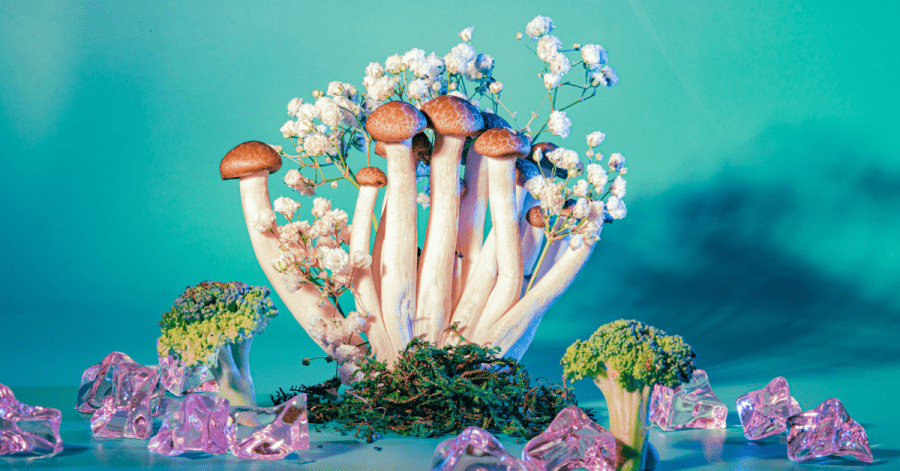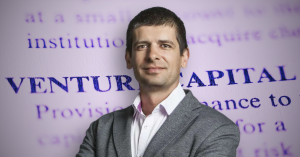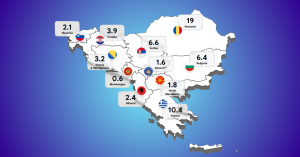The fungi kingdom, one of the least understood worlds on our planet, was recently explored in the American post-apocalyptic drama TV series, The Last of Us. The epic journey of Joel (Pedro Pascal) and Ellie (Bella Ramsey) to save humanity after a global pandemic triggered by a mind-controlling fungus (cordyceps), met its grand finale this week, but don’t worry, we’ll give no spoilers here.
Instead, we’ll turn attention to the extraordinary capabilities of fungi to “make our worlds, change our minds, and shape our futures,” as biologist Merlin Sheldrake writes in his acclaimed book.
Starting with the culinary world, fungi show an incredible diversity. Mushrooms – the fruiting body of fungi – can be pizza topping and gourmet delicacy. They come in different sizes, forms, textures, and flavors. Yet kitchen applications only scratch the surface of what fungi can do.
We tend to ignore the size and power of the fungi kingdom because, for the most part, we cannot observe it with our senses. Fungi are primarily microscopic. The majority of fungal mass are underground threads called hyphae. They spread across kilometers wide, foraging for nutrients inside soil and wood. Fungi are also present in the microbiomes of all living things and in the atmosphere.
In nature, fungi perform countless duties that keep our ecosystems in balance. Their incredible versatility and durability recently prompted more ecologists and entrepreneurs to experiment with fungi innovations that can solve some of our world’s most wicked problems, from pollution to mental health issues. The fungus is seen as the material, as well as the medicine of the future.
Below, we explore some of the main applications of fungi innovations across key verticals and map some of the earliest European startups and companies in the field.
Fungi innovations in the construction industry
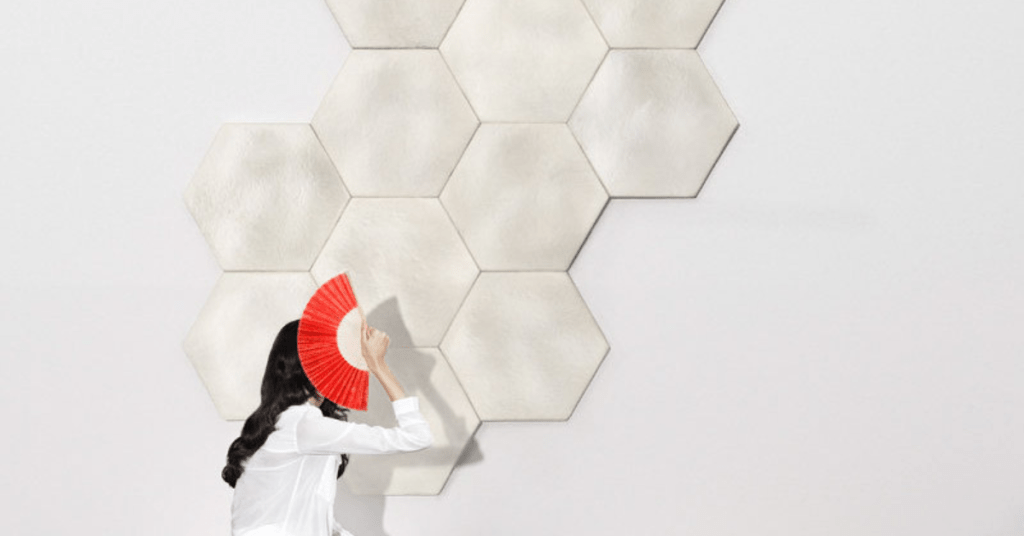
We talked about the fruiting part of the fungus, the mushroom. But what makes fungi a suitable alternative material for building components and interior design is their non-fruiting, vegetative root-structure. The mycelium can be grown into any desired shape and size, resulting in a light but strong material that has structural integrity. It outperforms plastic-based construction materials in thermal and acoustic insulation, while being safer and healthier. It can also have attributes added, such as fire resistance.
One company using fungi-based innovations for in constructions is Italian design services company Mogu. They develop mycelium technologies and commercialize solutions for everyday use in interiors and architecture, including aesthetic acoustic panels with great sound absorption properties, as well as floor tiles and roles made of agro-industrial residues.
Estonia-based Myceen also produces acoustic wall panels from materials that combine mycelium and organic industrial byproducts.
Meanwhile, London-based R&D and manufacturing company BIOHM produces biomimetic technologies. Using mycelium, they have developed a premium building insulation material. To grow the mycelium, they use commercial and agricultural by-products that would otherwise go to waste.
Fungi innovations in the packaging and consumer goods industries

Led by the principles of the circular economy, packaging and FMCG players are also experimenting with natural materials such as mycelium to replace traditionally used plastics, which take years to biodegrade if they are not properly recycled.
To that end, an eco-design company based in Bulgaria, Biomyc, partners with companies that build mushroom technology and uses the materials in designs and products for their clients. For instance, the composite material obtained from mycelium and non-food crop residues can be used as an alternative packaging material for everything from beauty products to electronics. Byomic prepared such a design concept for luxury anti-aging brand Éternelle.
On the manufacturing side, Ukrainian company S.Lab offers a mushroom and hemp-based alternative to polystyrene packaging that will fully decompose in 30 days after proper disposal. The company is currently building a pilot production line. In the future, they plan to set up packaging production lines in shipping containers that would be installed directly at the client’s premises.
Fungi innovations in the food and agriculture industry
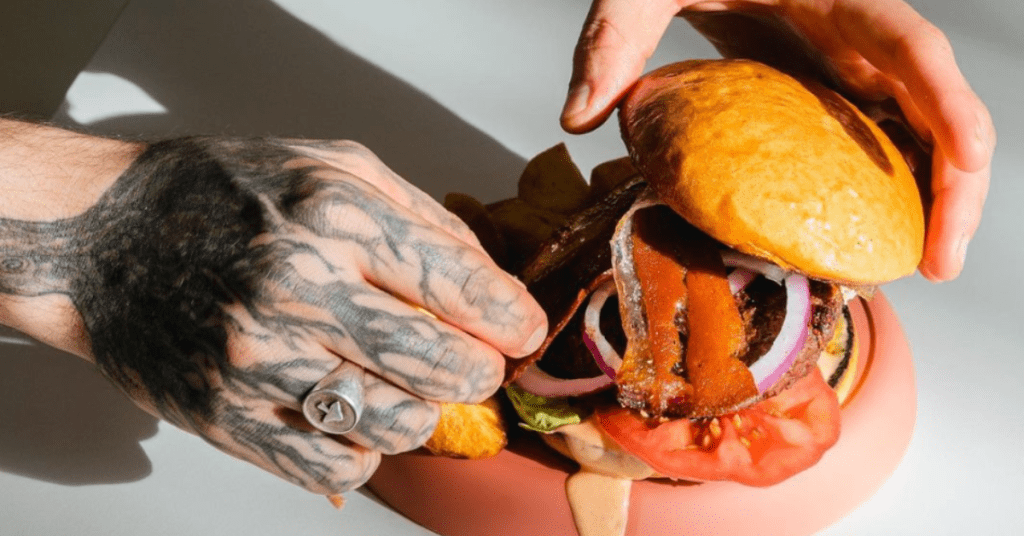
Another frequent application of fungi-based innovations in Europe is plant-based protein alternatives. The market for meat alternatives has exploded in recent years and is on its way to reach 7.7% of the global protein market by 2030.
Mycoproteins are obtained by fermenting the spores of specific mushrooms. The result is a high-protein, fibrous foodstuff that can successfully imitate meat products. There are several companies competing in the space, including Spain-based Innomy and Libre foods, and Germany-based Mushlabs and Bosque Foods (former Kinoko Labs), all backed by investors.
Then there is eniferBio, a spinoff of VTT Technical Research Centre of Finland, which has taken on the mission to re-establish the production of the PEKILO mycoprotein, started in the 1970s, and compete in the protein concentrate and isolate markets in animal nutrition.
Meanwhile, Dutch company Fungi Factory exploits another incredible property of mushrooms: the ability to break down complex molecules into simpler ones, which helps digest pollutants and thus thrive in inhospitable environments. Taking on the mission to help grow food while dealing with waster, Fungi Factory grows oyster mushrooms on locally available municipal waste streams such as coffee grounds and husk and wood shavings. Despite what one may think, the resulting food is healthy and safe.
. . .
Fungi-based innovations can help clean up the planet from pollutants, produce less-carbon intensive food, and create a circular economy whereby nothing goes to waste. But they don’t stop here. Recently, researchers have started to look once more into the mental health treatment potential of fungi. Psilocybin use in treating mental disorders started more than fifty years ago, but was restricted and prohibited after being associated with the anti-establishment culture of the 1960s. This year marked a great milestone in the renaissance of psychedelics as medicine after Australia approved magic mushrooms and MDMA for use by people with certain health conditions. The future is looking bright for fungi and humans alike.

